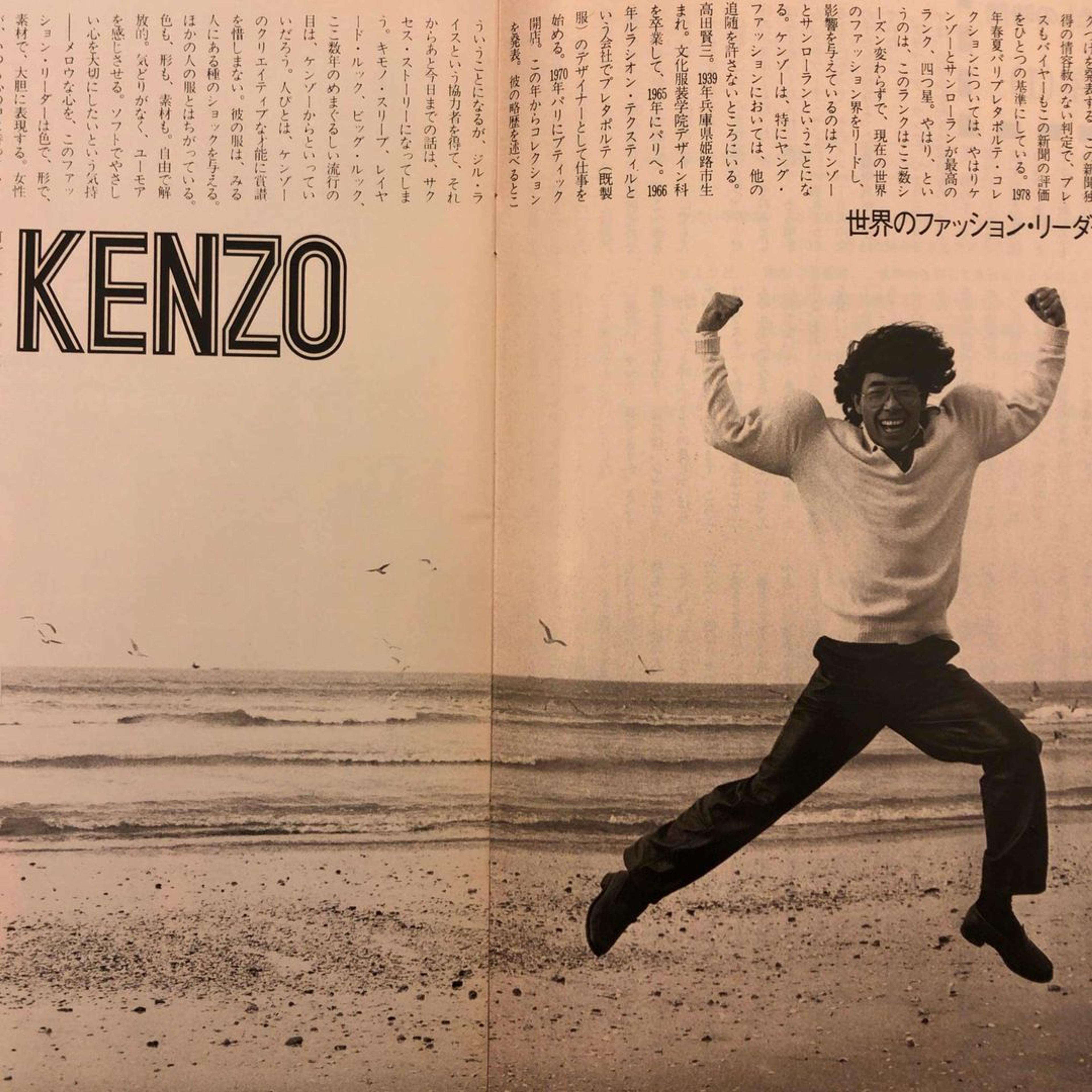The Costume Institute's Irene Lewisohn Costume Reference Library, which encompasses over thirty thousand books, periodicals, and ephemera from around the world, holds a magnificent archive of Hanatsubaki—a PR magazine published by the Japanese cosmetics company Shiseido. Since its establishment as Japan’s first Western-style pharmacy in 1872, Shiseido has invested in innovative marketing and advertising initiatives to promote its products and develop its corporate identity. Distributed at Shiseido’s chain stores starting in 1924, the company’s first PR publication, Shiseido Geppō (“Shiseido Monthly”) responded to the ever-growing influence of Western culture on women’s attire and lifestyle. The monthly magazine, later retitled Shiseido Gurafu (“Shiseido Graph”) in 1933, introduced wide-ranging content, from Western beauty and fashion trends to short stories authored by local writers.
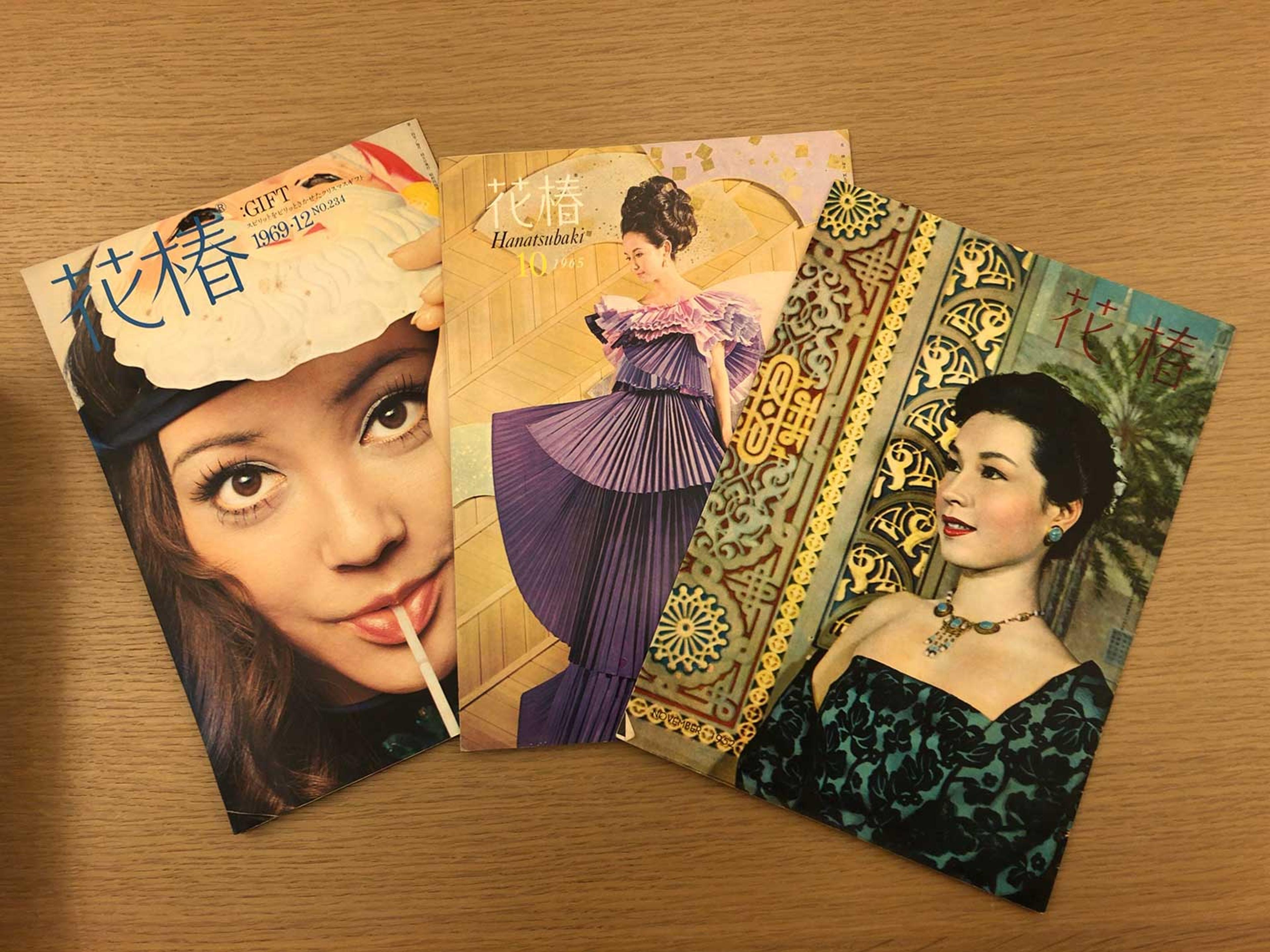
From left: Hanatsubaki December 1969, October 1965, November 1952. All photos by the author
In 1937, the magazine changed its title to Hanatsubaki, a name referring to the Japanese camellia, the company trademark. Relaunched in conjunction with the newly established consumer loyalty program, “Hanatsubaki-kai” (Camellia Club), the magazine sought to disseminate beauty tips among the Shiseido customers. Though seemingly commercial, Hanatsubaki presented topics on beauty, fashion, food, and culture through a well-rounded selection of articles, illustrations, and photography. The magazine went on a decade-long hiatus during World War II but made its comeback in 1950 and continues to be published today.
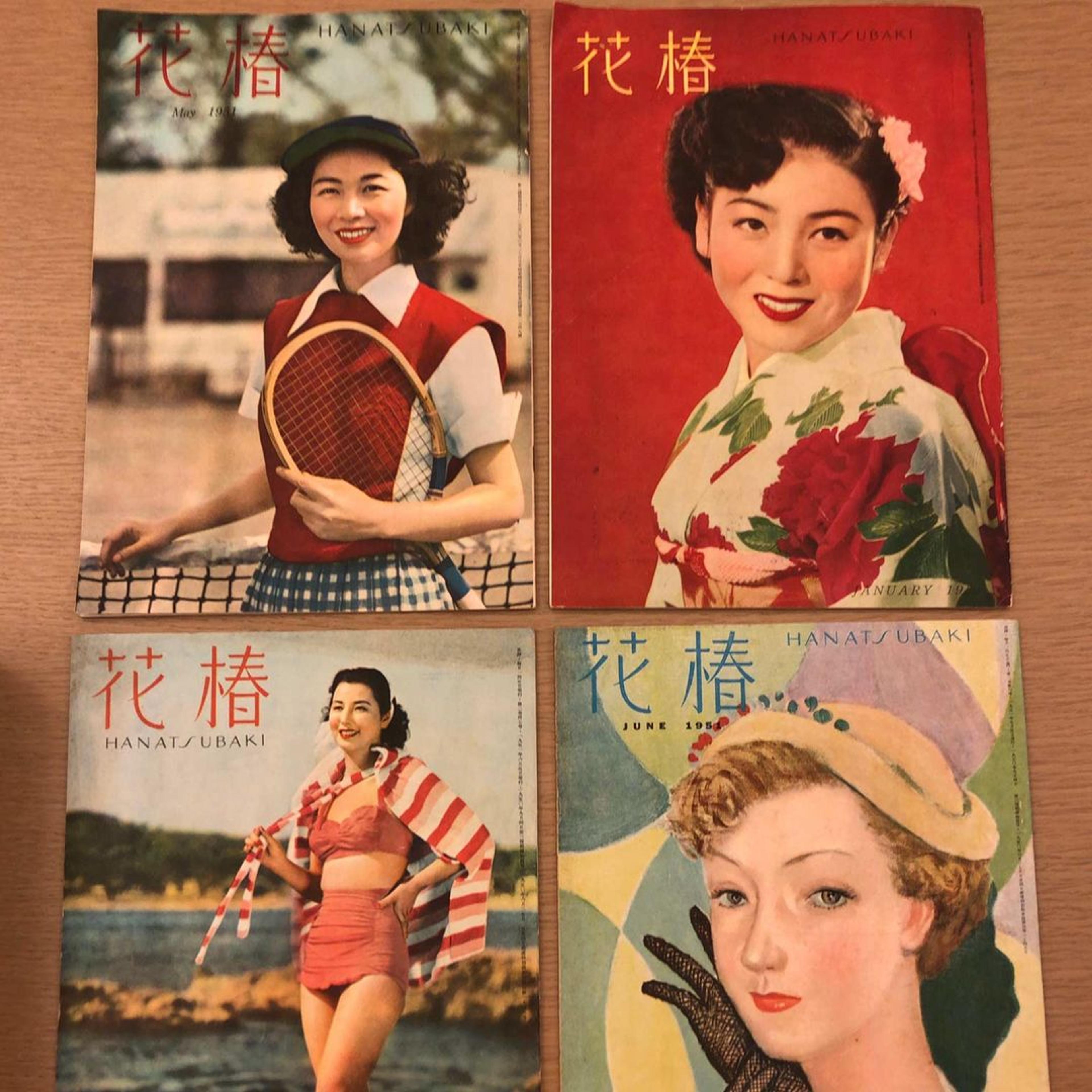
Hanatsubaki, May 1951 (top left), January 1951 (top right), July 1951 (bottom left), June 1951 (bottom right)
The Costume Institute Library has amassed a robust collection of Hanatsubaki issues dating from the 1950s to the present day. During the 1950s, the magazine covers featured vibrantly colored illustrations and photographs, while the interior pages were printed in black and white. Juxtaposing clothing, accessories, hairstyles, and makeup that complied with both Western and Japanese styles of dress, the pages of Hanatsubaki reflect a transitional period in the history of women’s fashion in Japan—while Western-style attire was increasingly adopted by women in Japan, kimonos were still commonly worn for certain occasions.
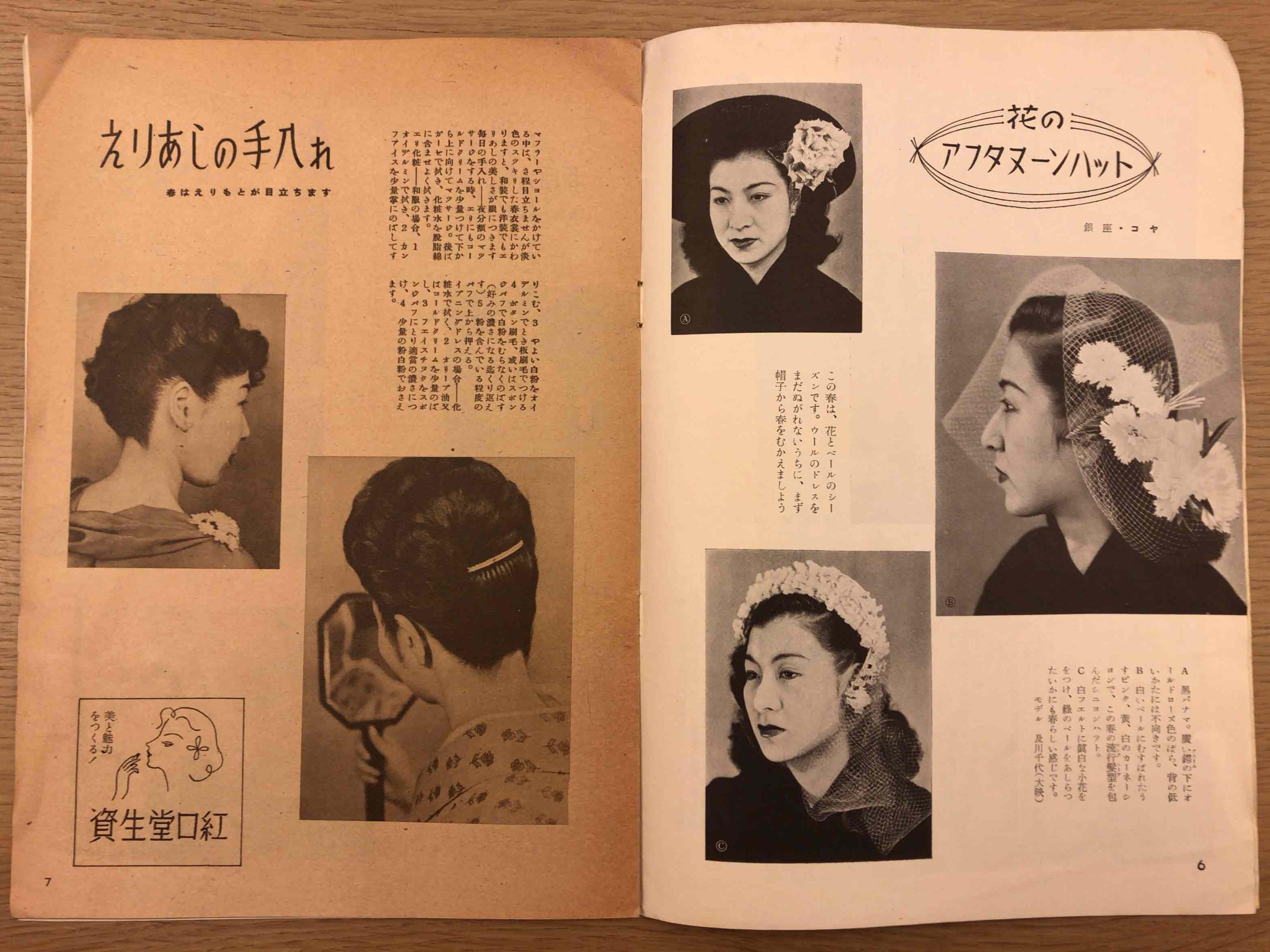
Tips for a beautiful neckline (left), floral afternoon hats (right), Hanatsubaki, April 1951
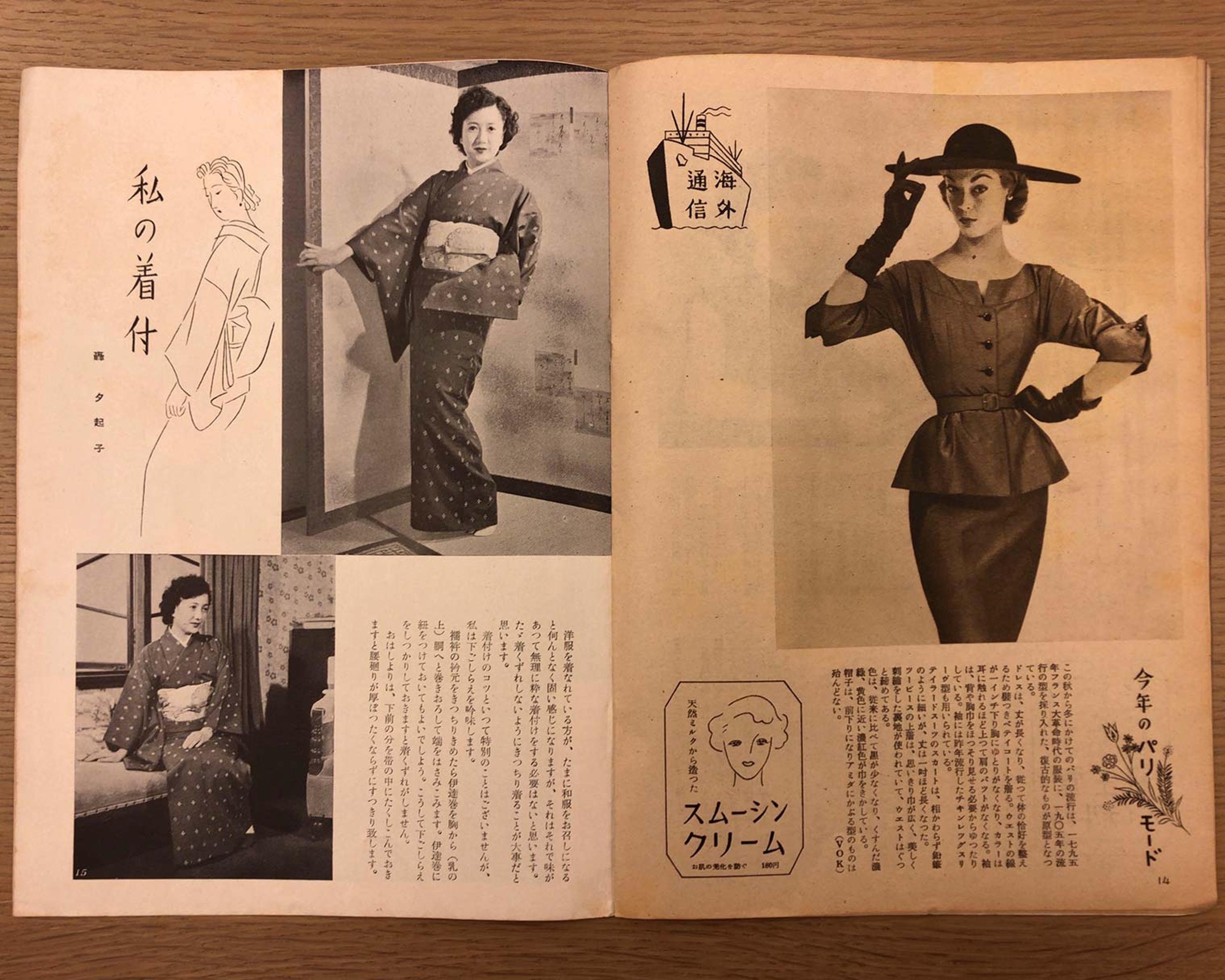
Kimono styling (left), fashion from Paris (right), Hanatsubaki, November 1951
The strong interest in Western beauty ideals and lifestyle can also be seen through interviews with foreign women, such as the wives of government officials, correspondents, and expatriates residing in Japan. For example, in the April 1951 issue, a spread titled “A Parisienne’s Flowers and Dress” relays the latest evening looks worn by the wife of a French expatriate.
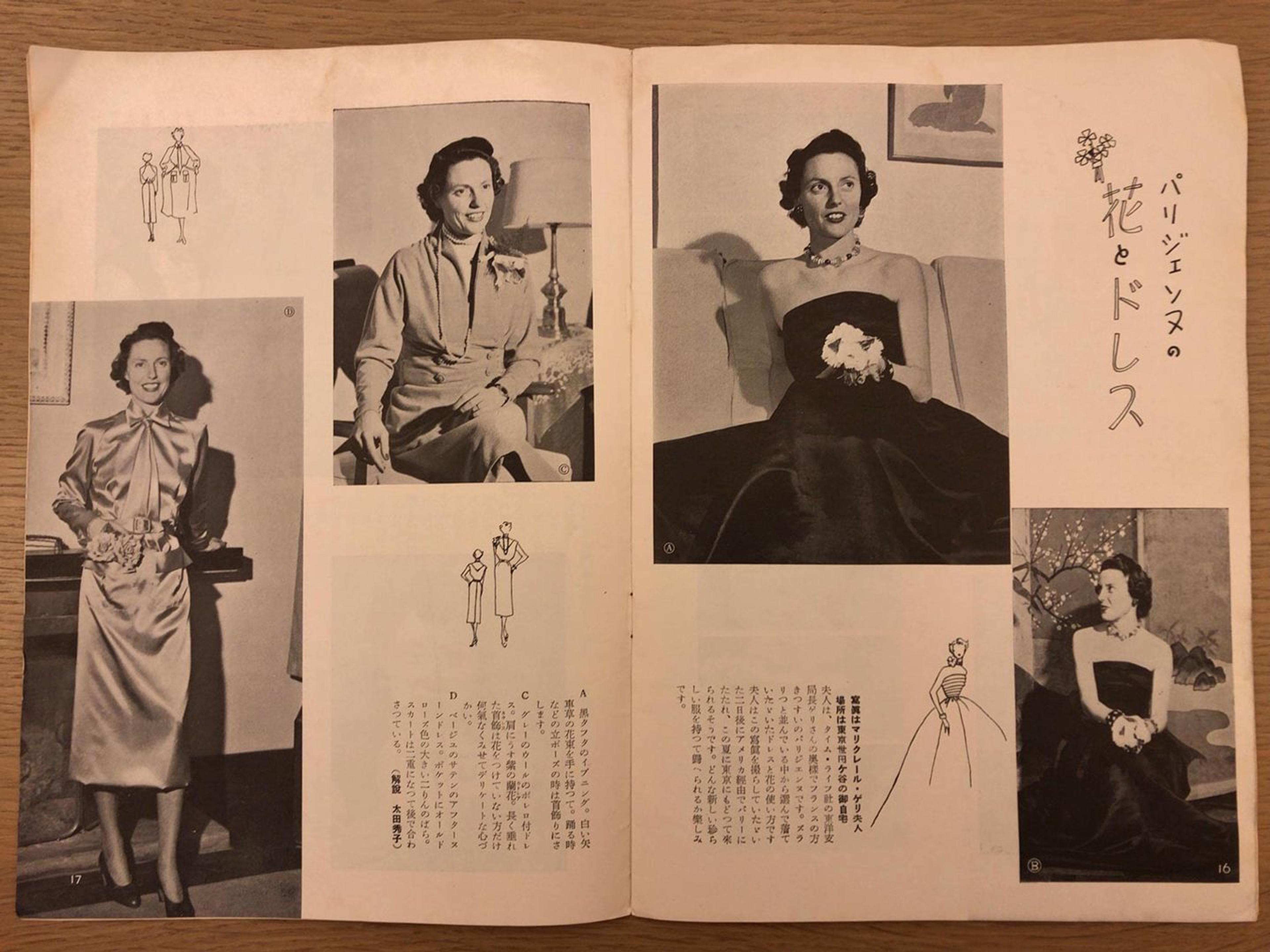
“A Parisienne’s Flowers and Dress,” Hanatsubaki, April 1951
Another distinctive feature of the magazine in the 1950s was a series on fashion history contributed by Takeo Yamamoto—the chairman of Yamamoto Fukusō Senmon Gakkō, a dressmaking school in Osaka. Yamamoto introduced a different era each month in articles featuring photography of local models styled in re-creations of period clothing. Both fun and informative, the series conveys the publication’s broad scope in cultivating knowledge on the origins of Western-style clothing.
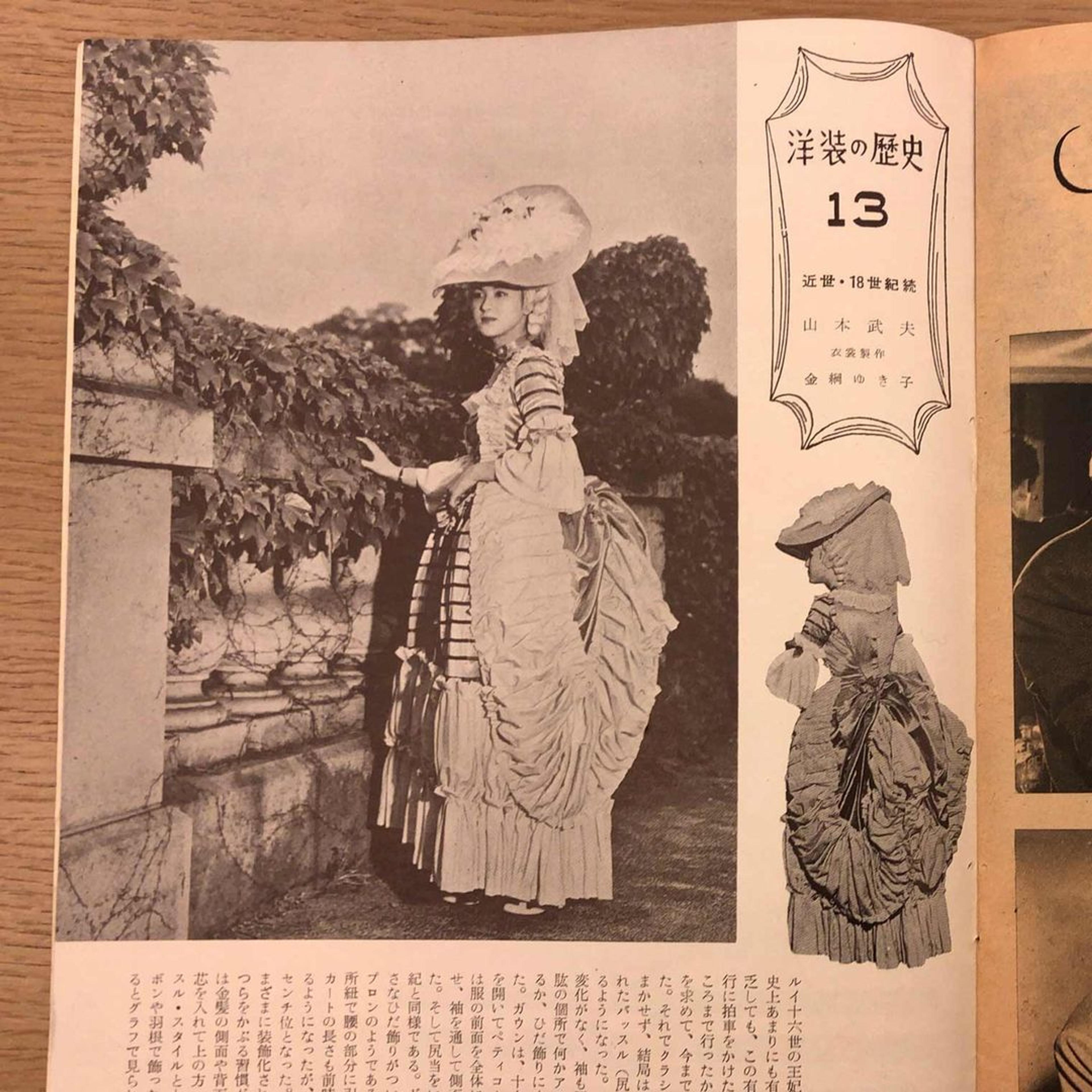
"History of Western Fashion History: 18th Century," Hanatsubaki, June 1953

From left: Hanatsubaki January 1978, March 1977, January 1976
By the 1970s, the magazine began incorporating color photography in its pages that was highlighted by cutting-edge illustration and editorial design. The November 1970 issue, for instance, promoted Shiseido’s latest eye makeup collection in a campaign titled “Today’s Eye.” A large eye-shaped graphic pictured across the spread embodied the trend for bold colors and dramatic looks. The beauty and fashion features from this period often included collages of photographs and illustrations, which further assisted the artistic focus of the magazine.
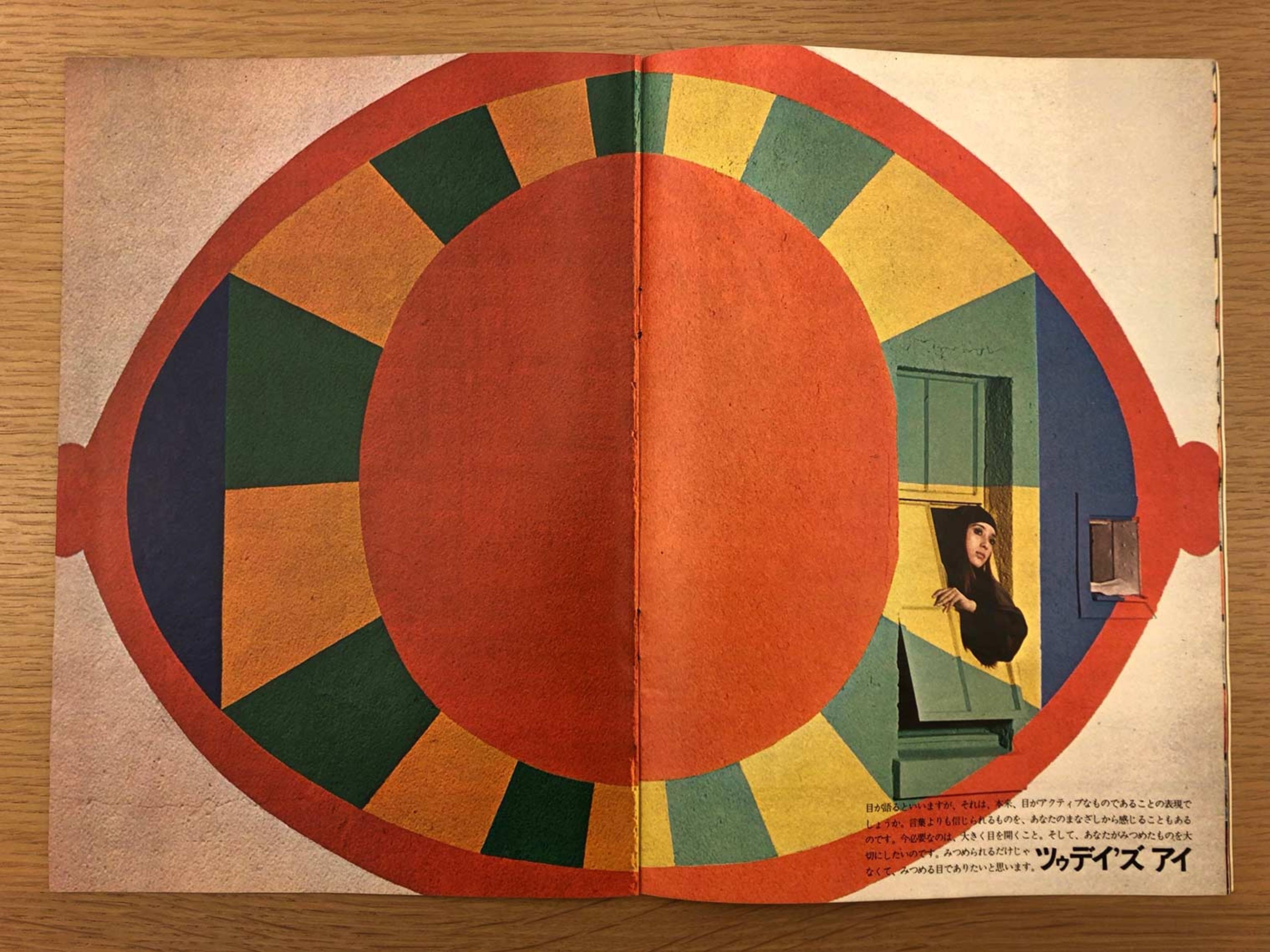
“Today’s Eye,” Hanatsubaki, November 1970
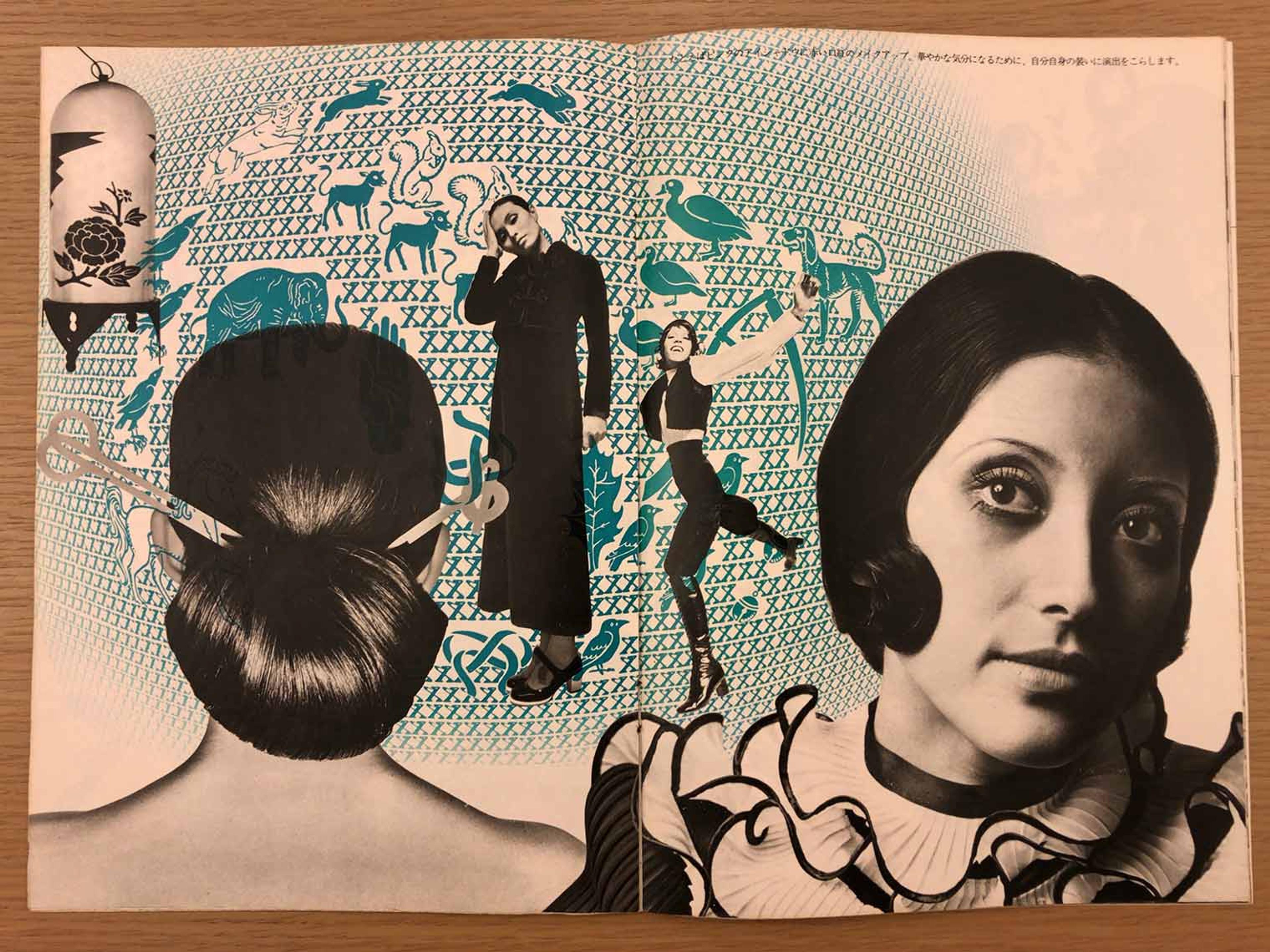
Makeup ideas for the holidays, Hanatsubaki, December 1970
Sections, such as “About Fashion,” were dedicated to industry news about both Japanese and international fashion. From the 1970s on, Hanatsubaki frequently highlighted the work of Japanese designers, including Kenzō Takada and Issey Miyake, who were gaining international recognition through their collection shows in Europe and the United States at the time.
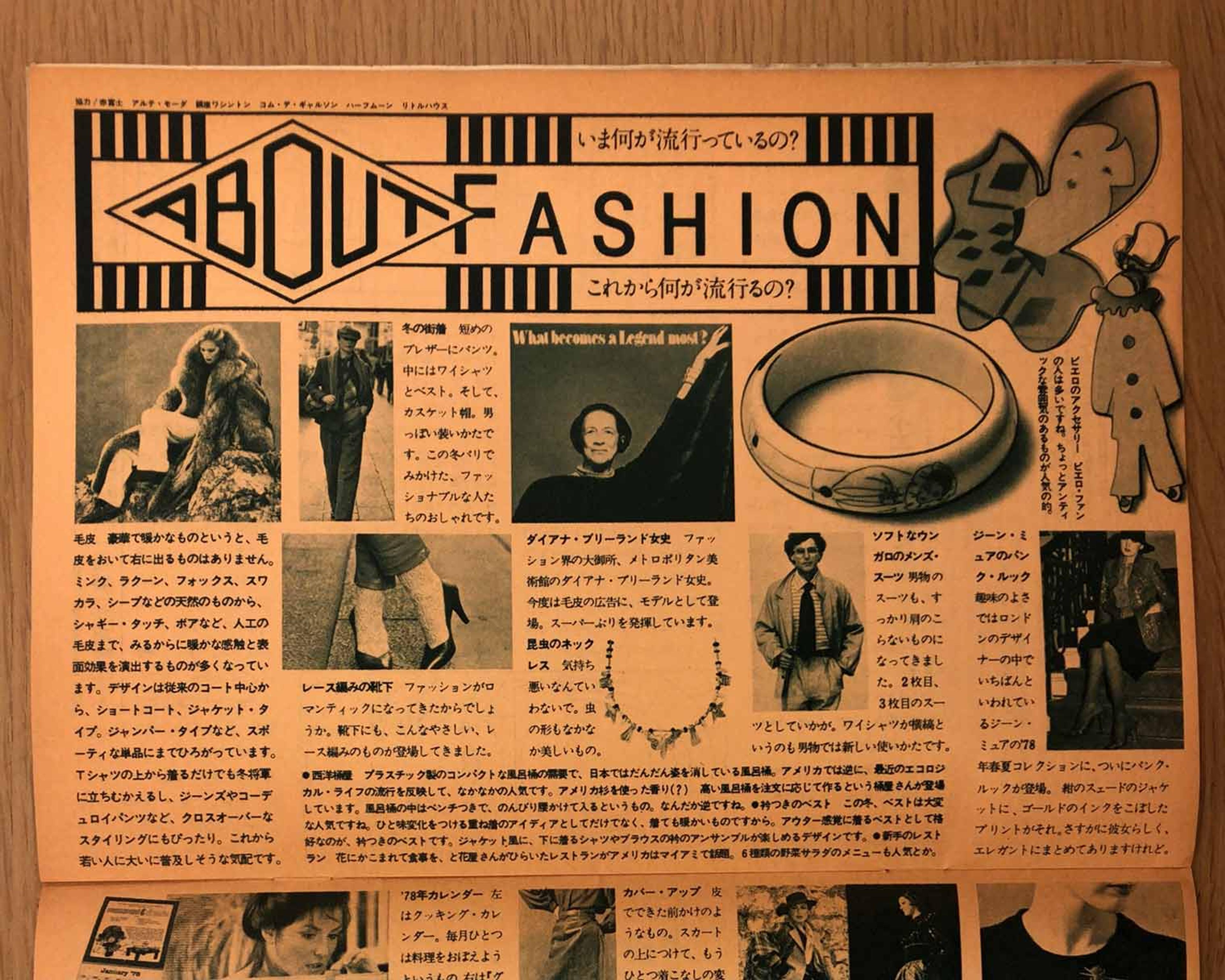
“About Fashion,” Hanatsubaki, January 1978. The photograph in the center is a detail of a Blackglama advertisement featuring Diana Vreeland, who served as Special Consultant of the Costume Institute at the time.
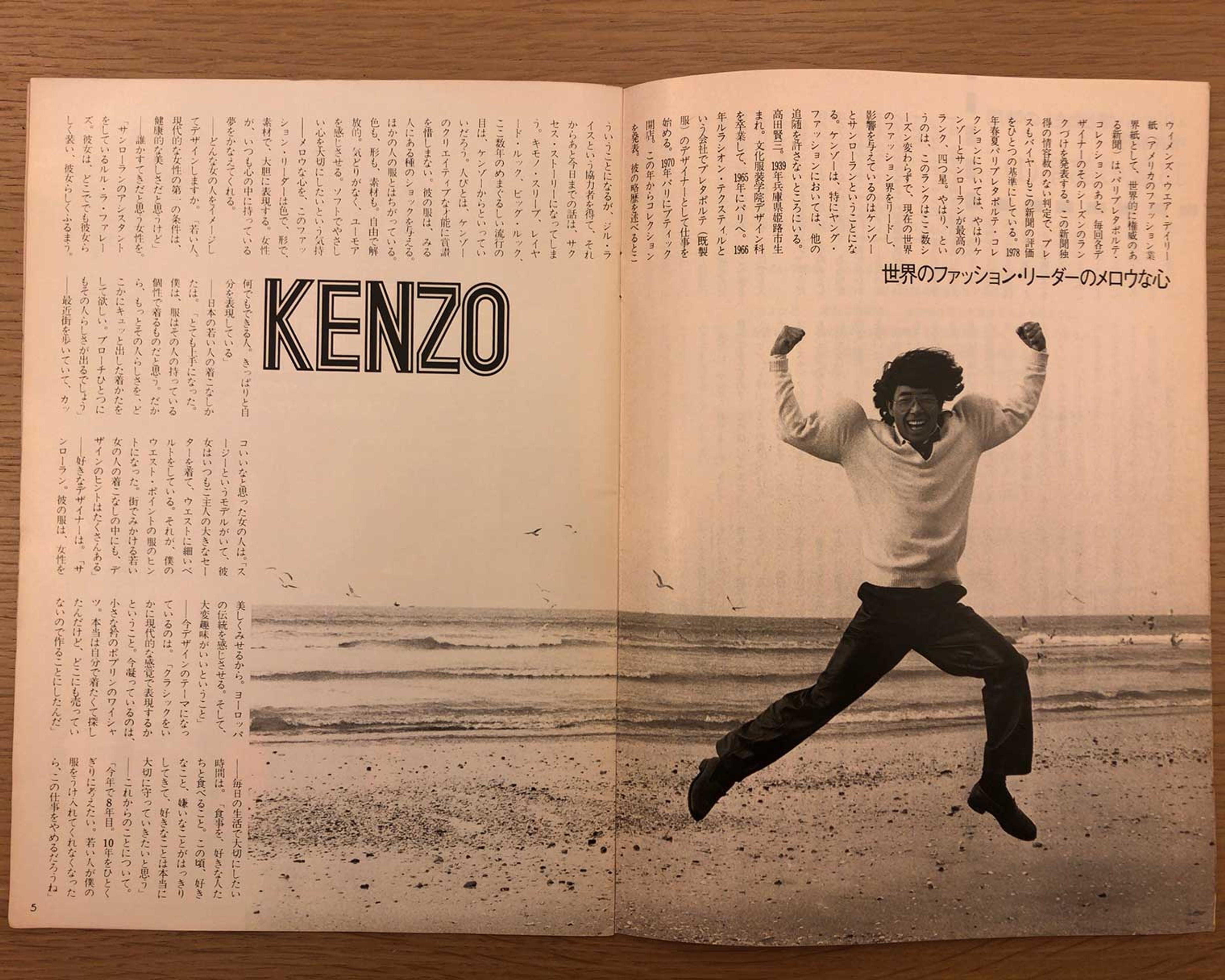
Interview with Kenzō Takada, Hanatsubaki, January 1978
Shiseido advocated for cultural exchange through fashion, as evident in its 1977 “Paris Six” initiative. This initiative organized fashion shows around Japan and invited six French designers to participate: Jean-Charles de Castelbajac, Claude Montana, Thierry Mugler, Dan Bélanger, Jean-Claude de Luca, and Anne Marie Beretta. While first providing an opportunity for the Japanese public to view the latest Parisian fashions, this project also helped build Shiseido’s brand awareness abroad, and led to its later collaboration for the Paris Collections. The fashion editor Melka Tréanton, who supported the “Paris Six” shows, began to contribute seasonal runway reports for Hanatsubaki, as shown in numerous issues from the late 1970s through the 1980s.
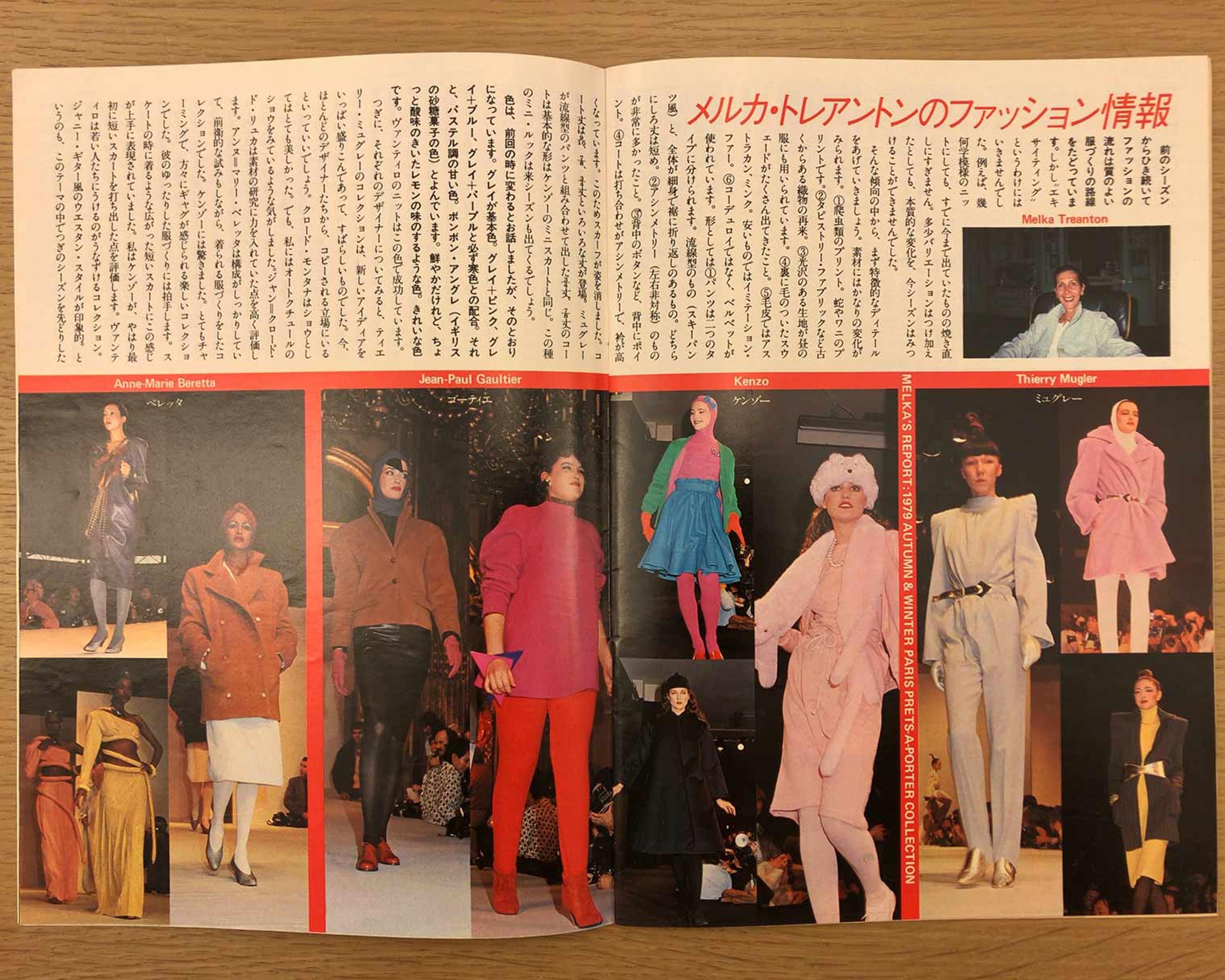
Paris collection report by Melka Tréanton, Hanatsubaki, August 1979
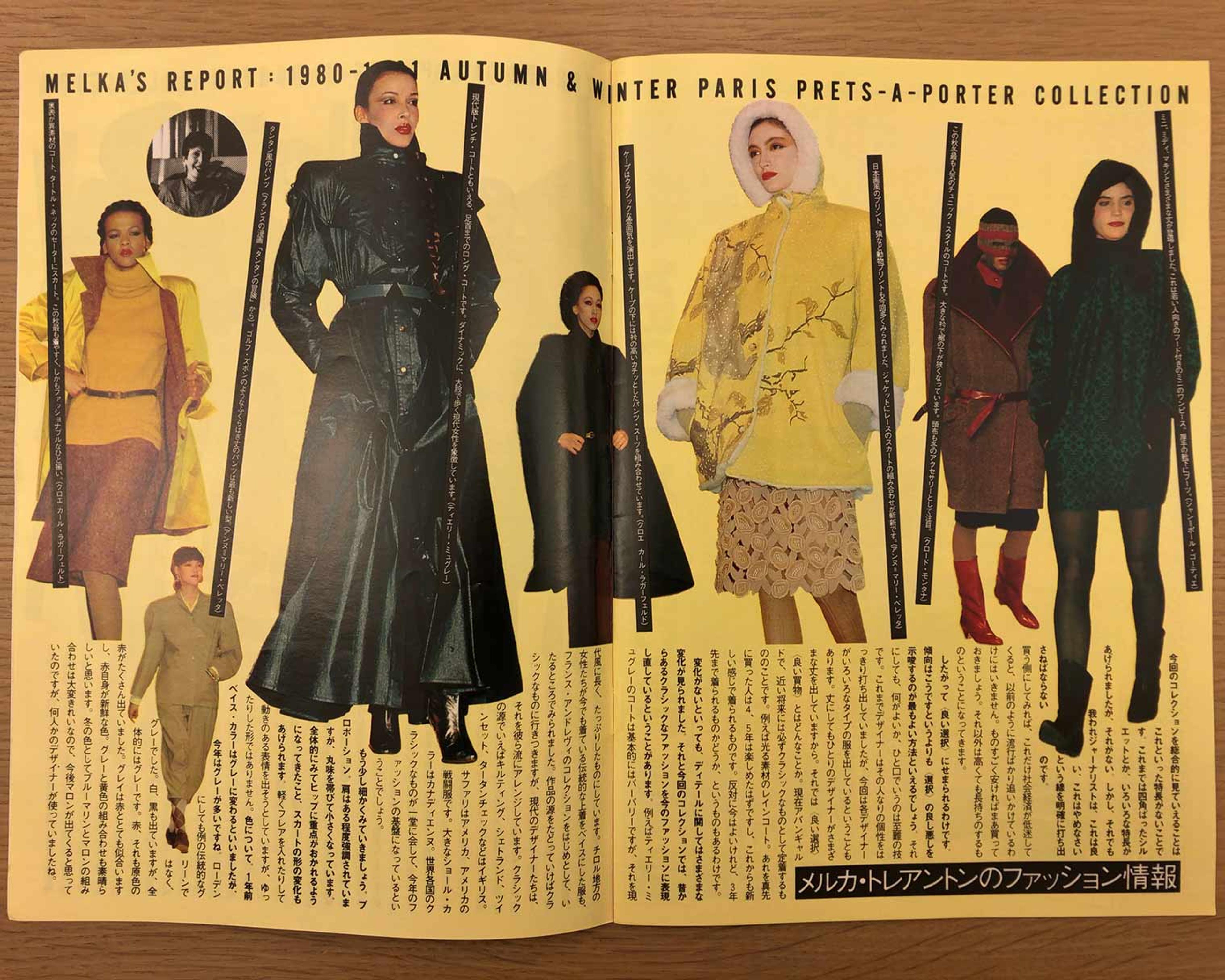
Paris collection report by Melka Tréanton, Hanatsubaki, September 1980
Aiming to reach a younger readership, Hanatsubaki terminated its monthly print issues in 2015. While it has shifted gears to a digital platform with seasonal print editions, the longstanding publication continues to produce rich editorial content relevant to the current moment through the unique lens of a global beauty empire. Documenting the history of Japanese and Western cultures—from beauty and fashion to arts and literature—this invaluable archive is a true gem in the Costume Institute Library.
